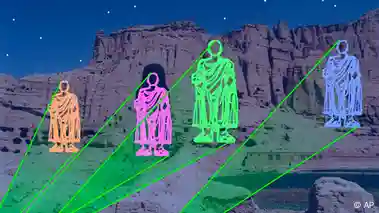RASC News Agency: Two decades after the Taliban’s infamous destruction of the Bamiyan Buddhas, the group has undergone a remarkable shift from eradicating Afghanistan’s cultural heritage to profiting from its ruins. Residents of Bamiyan report that while the Taliban impose harsh restrictions on the local population, arbitrarily detaining and searching individuals, they paradoxically allow both foreign and domestic tourists to visit the very relics they once sought to erase. On March 11, 2001, following a direct decree from Mullah Omar, the Taliban’s founder and then-leader, the towering statues of Buddha in Bamiyan were obliterated. Over the span of two days, Taliban militants mercilessly bombarded the statues with heavy artillery and explosives, wiping out nearly two millennia of historical and cultural heritage.
The 55-meter Salsal Buddha and the 38-meter Shahmama Buddha, standing for nearly 2,000 years along the Silk Road, symbolized Afghanistan’s rich architectural and spiritual history. However, the Taliban deemed them remnants of a non-Islamic past, justifying their destruction under the guise of religious orthodoxy, despite their significant historical and economic value. At the time, Mullah Omar was hailed within Taliban ranks as a “Destroyer of Idols”, with the annihilation of the Buddhas celebrated as an act of religious defiance. Yet today, the Taliban have transformed the site into a source of revenue, charging admission fees to tourists eager to witness the remnants of their own destruction.
Local residents accuse the Taliban of exploiting Afghanistan’s historical sites for financial gain while simultaneously using tourism to paint a deceptive image of stability and security. Critics argue that these efforts are an attempt to gain international legitimacy, portraying a controlled, tourist-friendly Afghanistan despite continued repression of its citizens. Adding to the irony, Abdullah Sarhadi, a key figure in the destruction of the Buddhas, now serves as the Taliban-appointed governor of Bamiyan. Once hailed as religious zealots who sought to erase Afghanistan’s pre-Islamic past, the Taliban now appear to be custodians of the ruins they created an evolution driven not by ideology, but by economic and political necessity.






